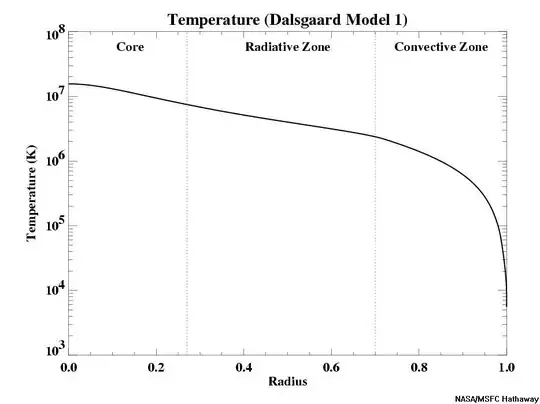You ask "what would we see", meaning you want to know what kind of radiation is given off.
(i) A sample from the surface looks like the surface of the Sun. i.e. it emits close-to-blackbody radiation at a temperature of 5800K. Except it now can't be a blackbody since you've taken it out of its environment and a small sample of it is no longer "optically thick". A black body is both perfect absorber and a perfect emitter and your sample would be neither. It would be a hot, optically thin gas at a temperature of about 5800 K. The gas would be partially ionised, you would see Balmer emission lines, probably emission lines due to alkali metals (sodium - orange; potassium - lilac), it would look like a "flame" and be transparent.
(ii) From the interior of the Sun we have a much hotter gas, and quite a lot denser (a few g/cm$^3$). The mean free path of a photon is only 1-2cm, so if your sample jar was big enough this might emit radiation as a blackbody at a few million Kelvin. What would you "see" - basically blue-white light. Most of the radiation emitted would be in the extreme ultraviolet.
(iii) A sample from the core would be much denser (150 g/cm$^3$) and much hotter (16 million K). This would be a blackbody at that temperature and would have a spectrum that peaked in the soft X-ray band. Appearance would be blue-white in the optical part of the spectrum.
There would be nuclear reactions occurring. At those pressures and densities that are responsible for the entire solar luminosity from a core region of about 10% of the solar radius. However, if you calculate the reaction rate, even a cubic metre of the stuff generates less than a kilowatt, so cannot sustain the huge flux of blackbody radiation for very long.
So, in all three cases, as soon as you are allowed to "see" the gas, it will cool extremely rapidly.
See the Figure below and also the table in this reference.

